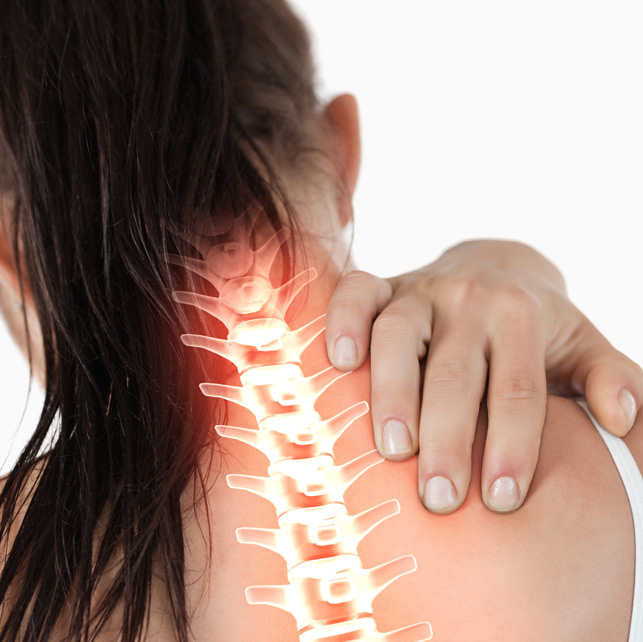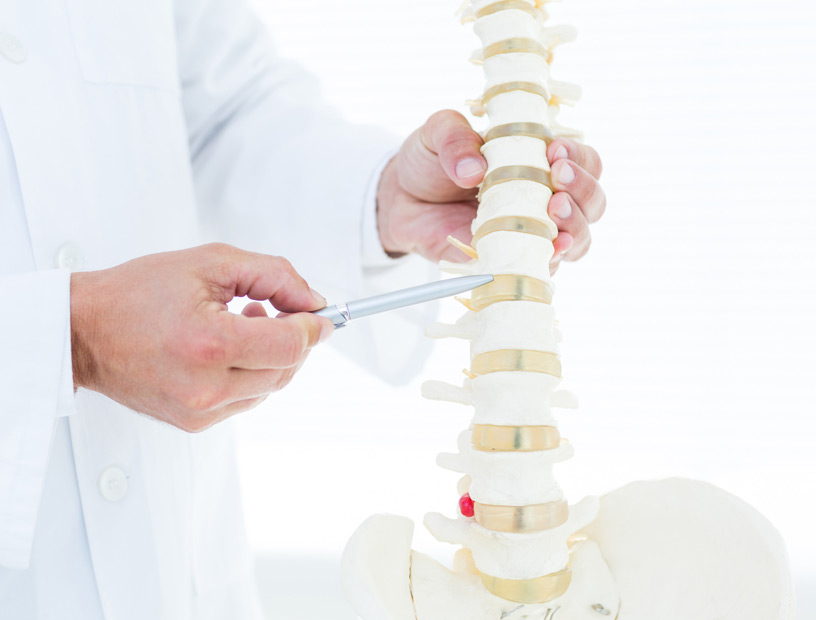
Discover how you can find relief with innovative outpatient laser spine surgery.
Experienced by nearly 90 percent of the population at one time or another, back pain is one of the most common medical complaints in the United States.
- Back pain affects people of all ages, although statistically it impacts people over the age of 50 more so than other age groups
- Outpatient laser spine surgery is the answer for many patients
Traditional open spine surgery typically requires large incisions in order to access the affected area. Oftentimes, soft tissues will need to be moved or cut in order to get to the right part of the spine to correct damage, remove a disc, or complete a fusion. The result for patients is usually a lengthy healing and recovery period, not to mention the potential risk for unexpected damage to nearby muscles. Today, many of the conditions that were only treatable with open surgery can be safely treated with less invasive laser spine surgery.
Disc Herniation and Damage
The purpose of spinal discs is to provide cushioning to the individual bones (vertebra) that make up the spine. When the inside material of one of these discs pushes outward (disc herniation), it sometimes presses on adjacent nerve roots. Herniated discs in the lumbar spine (lower back) are the most common cause of sciatica, although discs anywhere in the spine, including the neck and mid-back area, may also become damaged or worn.
Minimally Invasive Discectomy

Patients with spine pain from a herniated or damaged disc may benefit from a minimally invasive discectomy procedure. It’s a type of laser spine surgery that involves removing the part of the disc that’s compressing a nerve root without affecting stability of the spine. A discectomy may also be recommended for patients with disc damage due to degenerative disc disease, a term used to describe age-related wear of spinal discs, or spinal stenosis (abnormal spinal canal narrowing).
Nerve Compression
Nerves sometimes become compressed when a bulging disc or other spinal conditions narrows a passageway on each of a vertebra for nerve roots (foramina). A possible solution is minimally invasive laser spine procedure called a foraminotomy. Whatever is obstructing this passageway is removed during the surgery in a way that does not affect nearby structures. Pressure on nerve roots may also be eased by removing part of a small bone on the back of a vertebra called the lamina (laminotomy).
Minimally Invasive Lateral Lumbar Interbody Fusion
In some instances, the entire disc has that’s pressing on a nerve has to be removed. With a minimally invasive lateral lumbar Interbody fusion (LLIF), the damaged disc is removed through a side incision. A spacer is used to maintain spine height and a fusion is done to stabilize the backbone. LLIF may also be performed to relieve nerve compression due to degenerative scoliosis, an abnormal curvature of the spine.
Laser Spine Surgery for Facet Disease
The cartilage lining of joints of the spine (facet joints) helps these bones gently glide over one another to help provide stability and mobility to the spine. If this cartilage is damaged due age-related degeneration or injury, it’s referred to as facet disease. The lower back is commonly affected, which may result in symptoms similar to what’s experienced with sciatica. If treatments such as facet joint injections aren’t effective, a laser facet thermal ablation may provide the desired relief. It’s a minimally invasive outpatient procedure that involves cleaning the joint and deadening the nearby joint nerve.

Surgical Options for Scoliosis
Some patients have persistent discomfort caused by scoliosis, an abnormal curvature of the spine. Uneven shoulders is one of the more noticeable symptoms of the condition. If conservative treatments aren’t providing relief, transforaminal lumbar interbody fusion may minimize the deformity enough to alleviate symptoms.
Minimally Invasive Surgery for Sciatica
The longest single nerve in the human body, the sciatica nerve travels from the lower back on down. When this nerve is irritated, it’s possible to experience symptoms such as pain or weakness in legs, knees, or feet. Some patients with sciatica also have burning sensations or numbness in the buttocks or thighs. If the source of sciatica is a damaged disc, outpatient laser spine surgery may be done to remove or shrink the disc.
The goal with any type of laser spine surgery is to eliminate back, neck, or nerve-related pain altogether or reduce discomfort to the point where it’s manageable. It’s a goal often achieved with shorter recovery periods and no disturbance to nearby tissues. Additionally, laser spine surgery can often be done as an outpatient procedure. Preferred candidates are those who have been diagnosed with a clear source of spine-related pain, those who have tried non-surgical treatments for several months without successful, and individuals who are otherwise healthy.

on caring for specific orthopedic needs.
